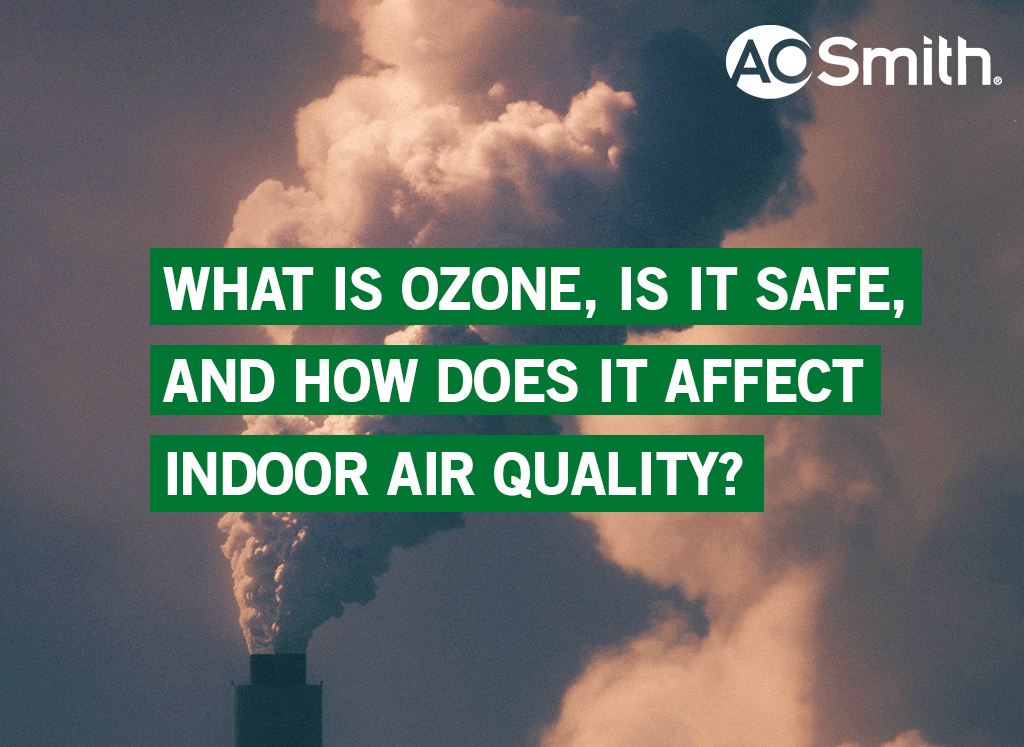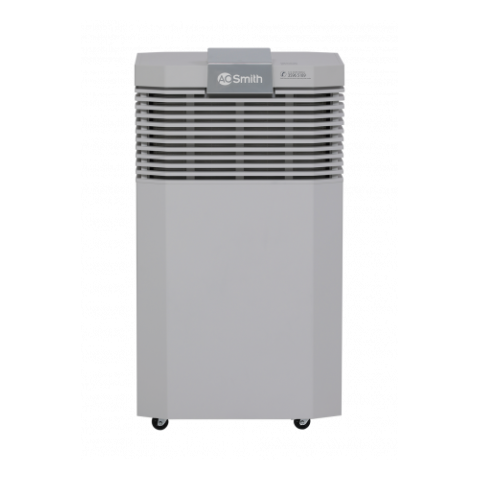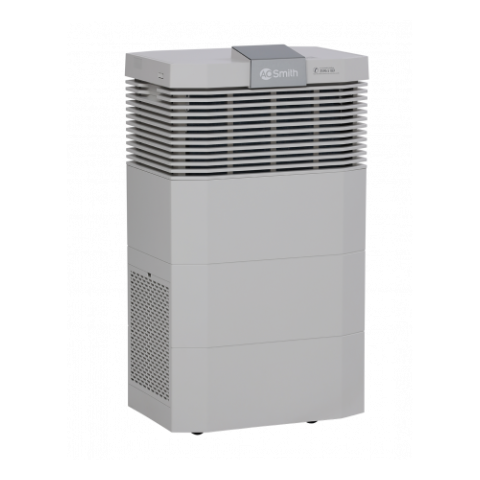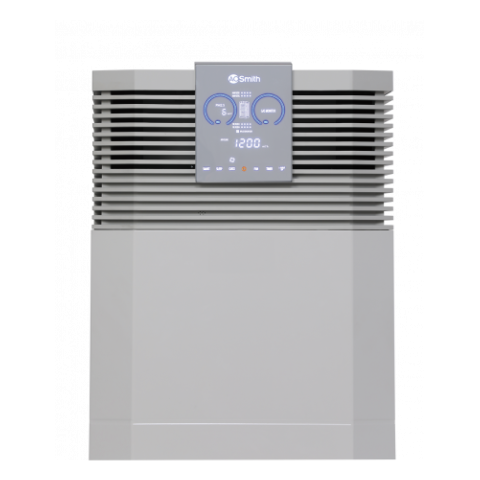Ozone is both a naturally occurring and man-made gas that can be found in the ground level atmosphere we breathe. Exposure to high concentrations of ozone has been known to cause breathing complications and other respiratory problems specially in children and infants. Knowing the common sources of indoor ozone and how it's created is important in keeping your indoor air free from this harmful gas.
What is Ozone and where does it come from?
Ozone is an inorganic molecule composed of three oxygen atoms (O3) formed when ultraviolet radiation interacts with oxygen (O2). You probably know ozone as the thin layer of gas located high up in the earth’s atmosphere that protects us from most of the sun’s harmful UV rays. This is called stratospheric ozone or “good ozone.”
Ground-level ozone, more commonly known as "smog", on the other hand, can be found in the air we breathe and is known to be harmful to us humans. This “bad ozone” is a secondary pollutant formed when two primary pollutants, volatile organic compounds (VOC) and nitrogen oxide (NOx), react with sunlight and stagnant air. NOx and VOC both come from natural and man-made sources. The same interaction also occurs in ozone generators that are being marketed as air cleaners.
How can exposure to ozone affect your health?
According to the U.S. Environmental Protection Agency (EPA), “The same chemical properties that allow high concentrations of ozone to react with organic material outside the body give it the ability to react with similar organic material that makes up the body.” This means bad ozone can interact with your body’s molecules in negative ways, opening you up to a myriad of harmful health consequences ranging from throat irritations to the worsening of chronic respiratory diseases such as asthma.
Healthy people and people with preexisting respiratory conditions can both experience breathing problems when exposed to ozone. Susceptibility to ozone varies from person to person but the risk of ozone related health illnesses are higher among children and infants. EPA says that regular exposure to ozone concentrations are associated with “increased asthma attacks, increased hospital admissions, increased daily mortality, and other markers of morbidity.”
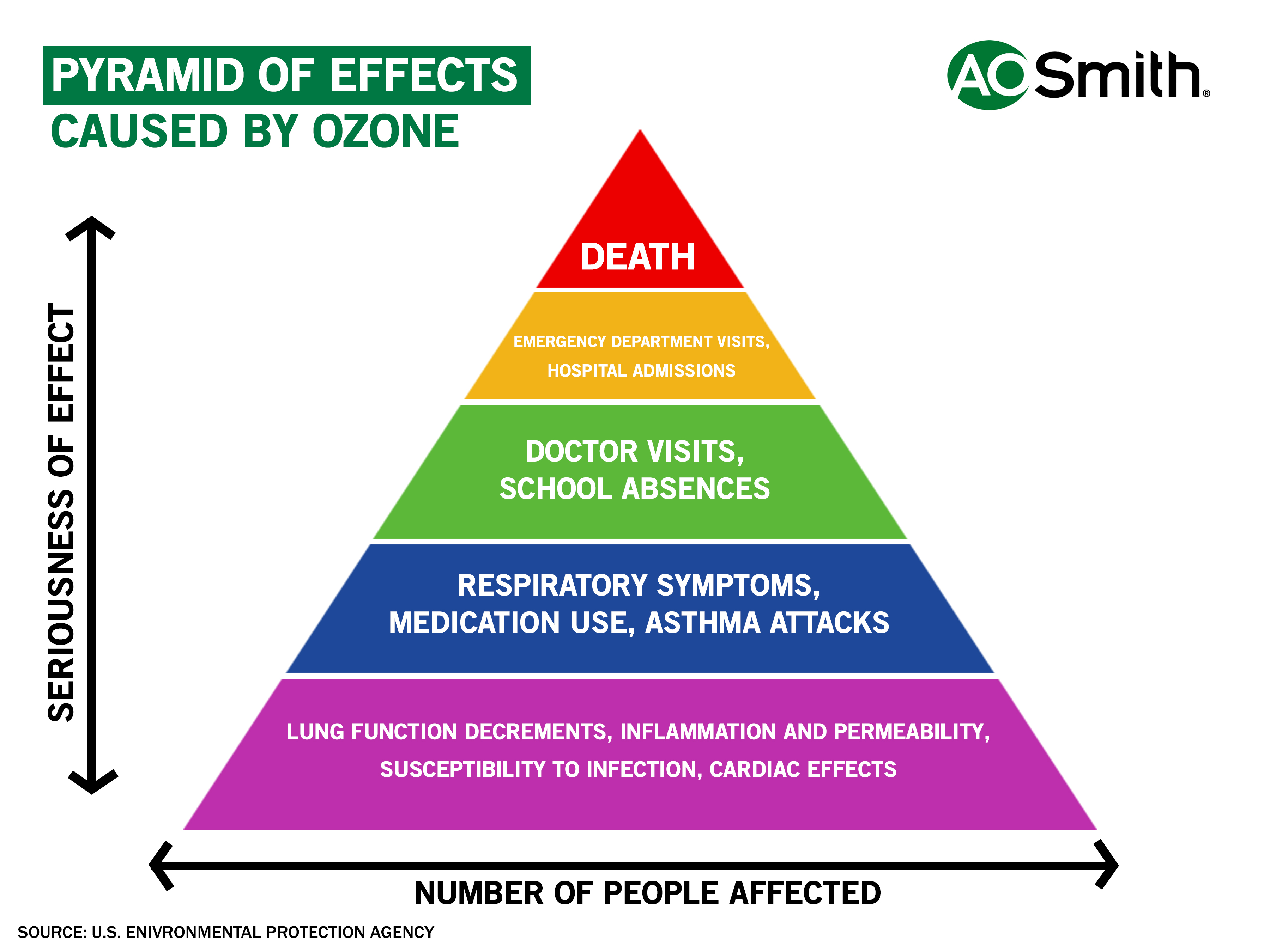
![]()
How can exposure to ozone affect your home?
Ozone is also known to accelerate the corrosion of materials such as copper pipes, galvanized pipes and other plumbing. By exposing your home to ozone you might be risking leaks caused by its highly corrosive properties. Likewise, any electronic products and electrical outlets exposed to ozone may also be damaged by corrosion.
Some air purifiers produce ozone
You may want to watch out for certain types of air purifier technologies that either produce ozone as a byproduct or use ozone as its primary method for cleaning. Your overall indoor air quality may suffer from re-pollution because of the ozone emitted by these devices.
Air purifier technologies and air cleaning methods that may emit ozone are the following:
Ozonators
Ozonators, or ozone generators, are a type of air cleaner that releases high concentrations of ozone molecules directly into the air, they are often marketed as a “natural” way to remove odors.
Electrostatic Precipitation
An air purifier that utilizes electrostatic precipitation works by imparting an electrical charge to contaminants in the air so they would cling to plates or fibers with an opposite charge located within the air cleaning device. This method is somewhat effective at removing airborne particles but the method of releasing an electrical charge into the air causes oxygen molecules to become ozone. Research has shown that electrostatic precipitation can increase the ozone concentrations indoors by up to six times the outdoor level.
Ionizers
The way Ionizing air purifiers work is similar to that of electrostatic precipitation air purifiers. Ionizers use a coronal discharge to add electrically charged ions into the air which attach themselves to airborne particles giving them a charge. These charged particles then attach themselves to other charged particles and the combined weight of the accumulated clump of particles causes it to fall onto the surfaces of your room giving the feeling of "fresher air". Just like in electrostatic precipitations, the ionization process also generates ozone as a byproduct.
UV-C Light
UV is claimed to be effective at destroying germs that are processed in an air filter but when the UV light from these purifiers and the VOC from the air interact a photochemical reaction occurs that leaves ozone, smog, and other chemicals as a byproduct, this process is similar to how ground-level ozone occurs in nature.
PCO
Photocatalytic oxidation (PCO) air purifiers use a filter coated with a chemical catalyst which is activated by UV-C light to remove gaseous contaminants from the air. The resulting photochemical reaction creates hydroxyl radicals which oxidize pollutants that make contact with the filter’s surface. Ideally, this process should break down the gaseous chemicals into harmless CO2 and water but if the PCO device cannot efficiently produce hydroxyl radicals in large amounts, it may end up with incomplete byproducts such as formaldehyde and other volatile organic compounds. The UV-C lamp used to activated the chemical catalyst may produce ozone if it does not have the proper coating.
If ozone is bad, how come it's used in some air cleaners?
Ozone's therapeutic properties may have been taken out of context
In a research conducted to determine the medicinal properties of ozone (1), it was shown to possess an anti-oxidant effect in small controlled doses. While It was established that prolonged inhalation of ozone causes harmful effects to the respiratory system, the study found that "single ozone doses can be therapeutically used in selected human diseases without any toxicity or side effects." It is important to remember that this experiment was conducted by trained professionals and experts in controlled environment with the right dosage. Some manufacturers of ozone creating devices may take this information out of context to market their products as a "natural and safe" method to cleaning indoor air.
Ozone has the ability to disinfect through oxidation but may create a carcinogenic substance as a byproduct
Ozone oxidization is mainly used in treating water sources to rid them of pathogens, bacteria, and other biological hazards (2). This method of disinfecting targets the cell walls of microbial organisms thereby eliminating them. This is similar to how doses of ozone, in a medical setting, are used on specific diseases to oxidize and neutralize them. While oxidized substances are not automatically "deleted" they can be removed with relative ease using a variety of purification techniques.
It is important remember that ozone can react with certain chemicals to form a harmful substance, one of these is its ability to turn bromide into bromate -a carcinogenic substance. Exposure to oxidizing agents that are too strong may also cause health complications.
Ozone can break down chemical pollutants but may create new pollutants as a byproduct if not calibrated correctly
Some manufacturers claim that ozone can eliminate and breakdown chemical contaminants into harmless carbon dioxide, oxygen, and water byproducts. Several studies cited by EPA have shown that the reaction process between ozone and common indoor chemicals may take months or years. For practical purposes, ozone does not react with these chemicals at all. It has also been shown that ozone may not be effective at removing carbon monoxide and formaldehyde in indoor air.
In chemicals wherein ozone can readily react to, it has been shown that these processes form harmful and irritating byproducts. In a laboratory experiment that mixed ozone with off-gassing chemicals from a carpet, ozone reduced many of these chemicals but ended up creating a variety of aldehydes as a byproduct and the total concentration of VOCs in the air increased rather than decreased.
Ozone can be effective against microbial growth but only in very high concentrations
Research also shows that ozone concentrations that do not exceed public health standards may not effectively remove biological pollutants such as mold, bacteria, and viruses (3). Ozone concentrations would have to be 5-10 times higher than what is deemed safe for domestic use in order to inhibit the growth and regeneration of superfine biological health hazards and even then the sanitizing effect of ozone is negligible against pollutants lodged in porous surfaces.
How can ozone be safely used?
Ideally, in a setting where no one can be directly exposed to the gas. The chemical reactions that make it possible for ozone to be effective in destroying microorganisms are also the same chemical reactions that can cause breathing difficulties to people exposed to it, being in a room while an ozone sanitation is occurring is not advisable.
Sanitizing empty rooms through the use of ozone has its practical applications in hospitals and commercial lodging. Ozone also sees widespread use in water treatment as a preferable alternative to chlorine since it is more effective at destroying bacteria and leaves no harmful chlorine by-products in the water. (4)
How can you keep your indoor air clean and ozone-free?
A simple thing you can do is to keep your windows closed in warm and sunny days with no wind, this will prevent naturally occurring ozone from entering your home. If you are looking to improve your home's indoor air quality through the use of an air purifier, then consider getting one with a HEPA and carbon filter. These tried and tested methods of filtration are effective at removing airborne contaminants and VOCs from your indoor air. You may want to choose air purifiers that are ozone-free and don't utilize any of the ozone generating methods mentioned earlier. Remember that EPA does not recommended the use of ozone creating devices to clean indoor air.
Sources:
(1)https://pubmed.ncbi.nlm.nih.gov/19260079/
(2)https://www.zuiveringstechnieken.nl/ozone-oxidation
(3)https://www.epa.gov/indoor-air-quality-iaq/ozone-generators-are-sold-air-cleaners
(4)https://www3.epa.gov/npdes/pubs/ozon.pdf
https://tsapps.nist.gov/publication/get_pdf.cfm?pub_id=914097
https://cfpub.epa.gov/airnow/index.cfm?action=aqibasics.ozone

